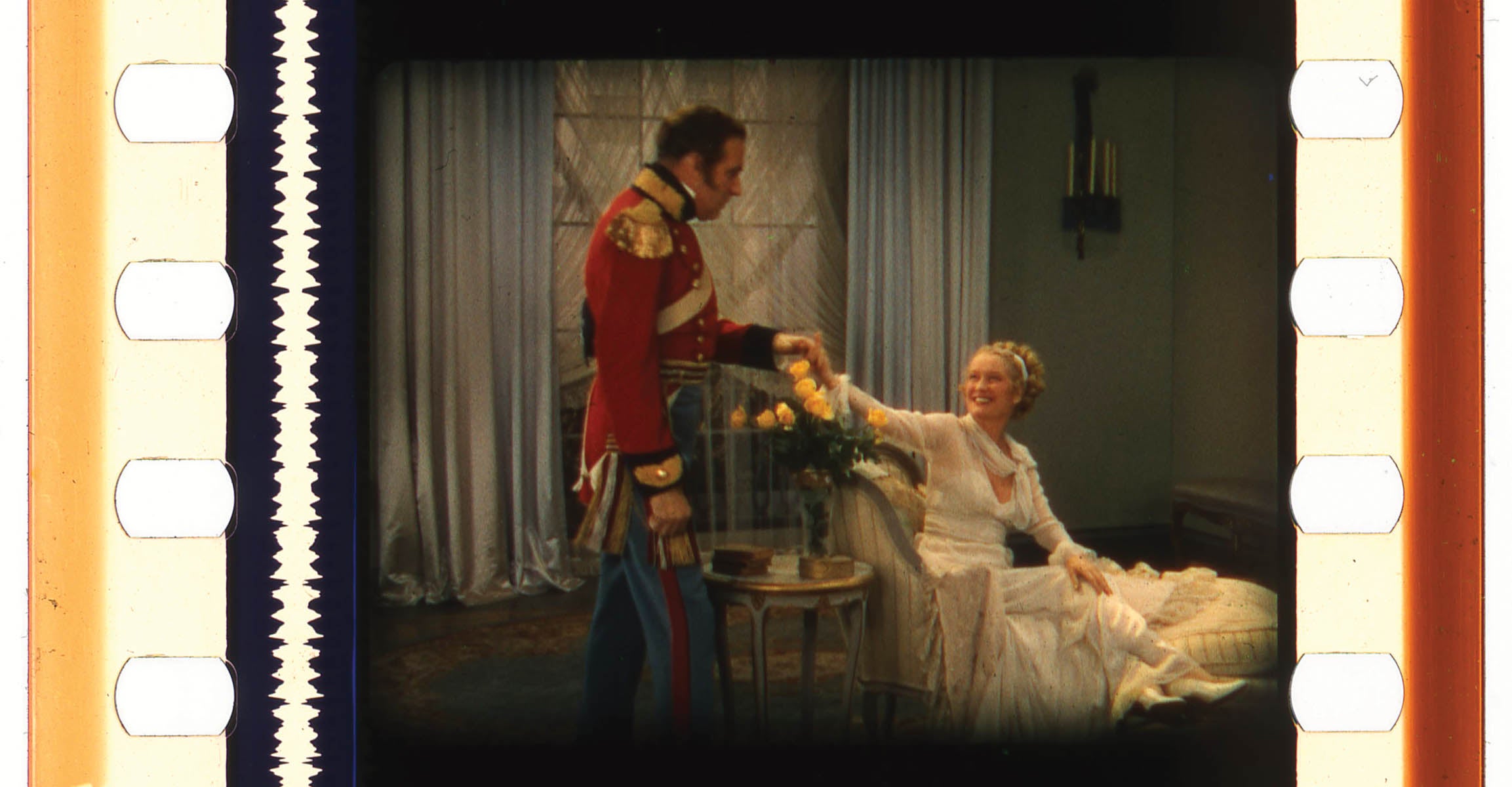
The first feature-length movie to be shot entirely in three-strip Technicolor, Becky Sharp (dir. Rouben Mamoulian, 1935) is a technological landmark in film history. Created by adding a blue film record to the red and green components of Technicolor's earlier two color process, three-strip Technicolor proved a crucial step in the development of the color motion picture. "Not only was the accuracy of the tone and color reproduction greatly improved [in the three-strip process]," boasted Technicolor founder H.T. Kalmus, "but definition was markedly better." After successful tests in short films as well as discrete sequences of longer pictures, three-strip Technicolor was adopted in 1933 by Pioneer Pictures for the exclusive production of eight films, "superfeature in character and especially featuring color." In late 1934, Pioneer announced that Becky Sharp would be its first Technicolor production.
Based on William Makepeace Thackeray's oft-adapted novel Vanity Fair, Becky Sharp is a sumptuous screen treatment that chronicles the rise and fall of its ambitious title character. In the episodic fashion of 19th-century serial fiction, the film follows Becky's steady climb up the social ladder: from graduation at a snobbish boarding school (where she's been a charity case) to an advantageous marriage and ascent to continental aristocracy. Her world is shaken by the Napoleonic wars, and her reputation ruined by her jealous husband, but Becky, simultaneously unscrupulous and self-sacrificing, is nothing if not a survivor, and she ultimately lands on her feet. Miriam Hopkins earned an Oscar nomination for her portrayal of the indefatigable Becky, and the film itself effectively paved the way for the spread of color that would change the visual scope of cinema forever.
Restoration History
Becky Sharp was restored by the UCLA Film & Television Archive in a number of stages. Stage 1 was completed in 1984. Around 1988 (stage 2), Italian print material was obtained, which allowed the picture on the last reel to be upgraded, while the somewhat splicey English sound track was edited to fit the Italian print material. For stage 3, completed in 2002, a print was obtained from the Netherlands that allowed improvement in both picture and sound quality. Restored in cooperation with National Telefilm Associates, Inc., Fondazione Scuola Nazionale di Cinema, Cineteca Nazionale (Rome), and the British Film Institute from the 35mm nitrate original Technicolor three-strip negatives, 35mm nitrate YCM separation master positives, a 35mm nitrate Technicolor print, and a 16mm print. Funding provided by the National Endowment for the Arts. Laboratory services by YCM Laboratories. Sound services by YCM Laboratories, Todd-AO. Special thanks to: Pete Comandini, Richard Dayton.
Watch before and after examples of the Becky Sharp restoration:
< Back to UCLA Restorations






